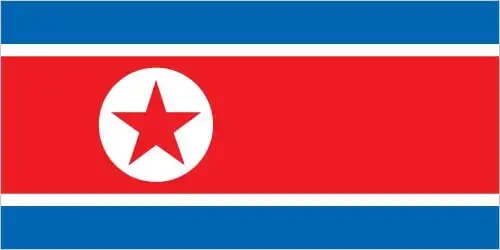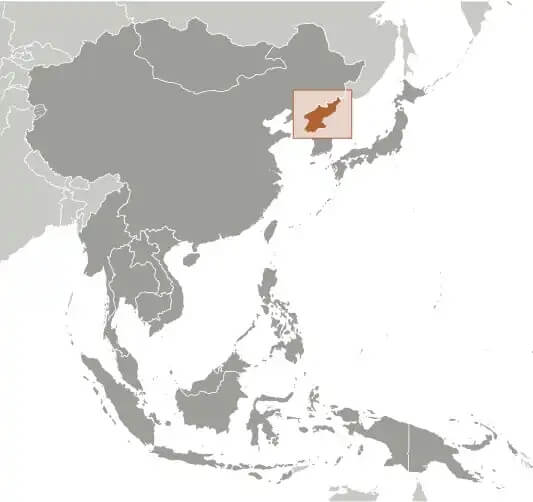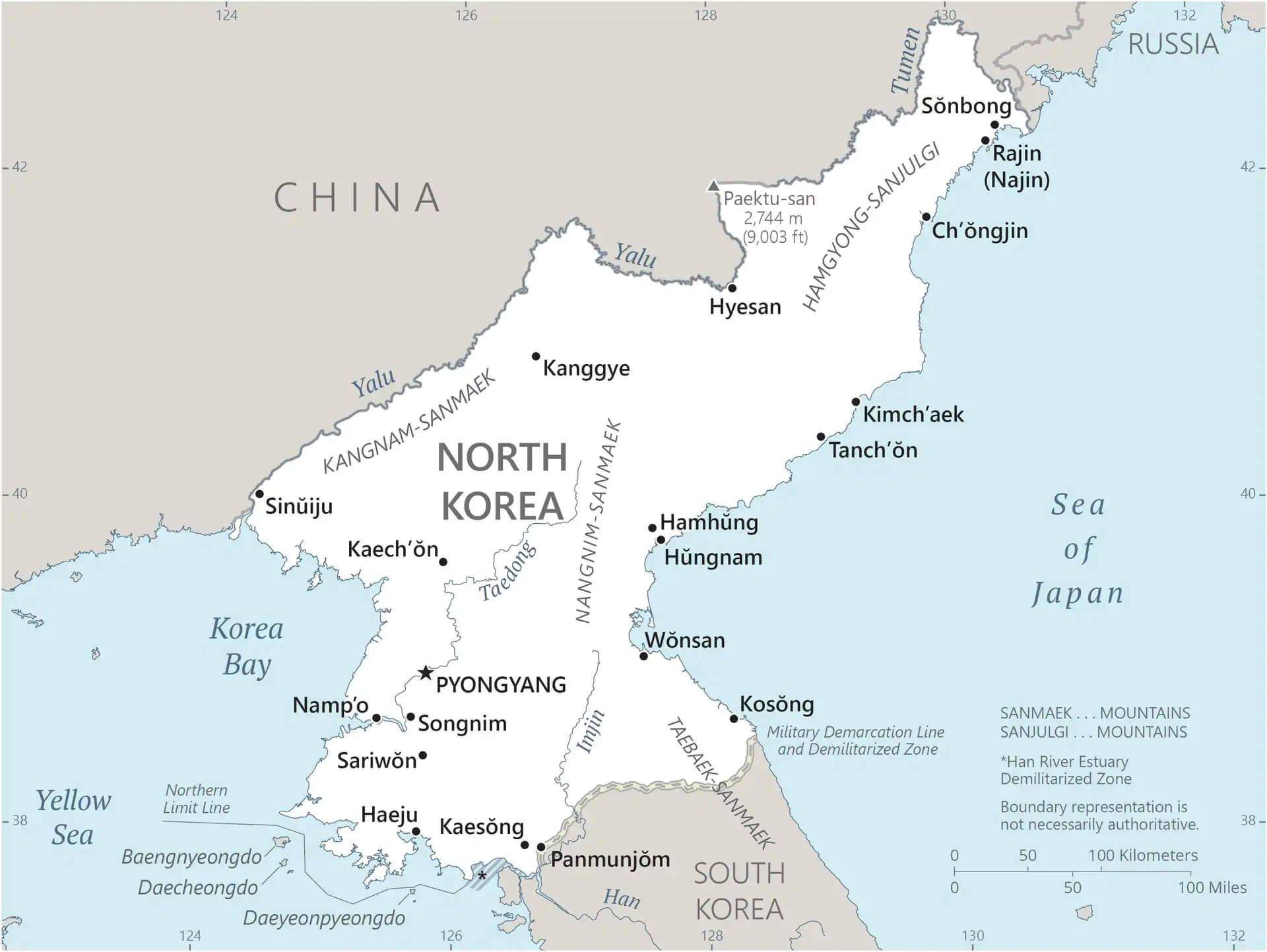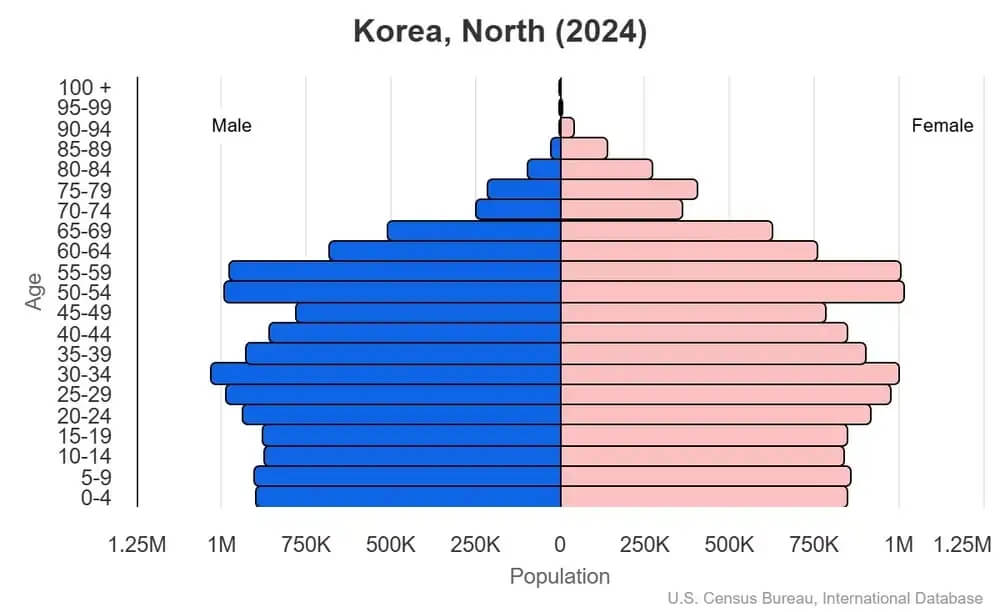World Book
North Korea
Introduction
Background
An independent kingdom for much of its history, Korea was split after World War II, with the northern half coming under Soviet-sponsored communist control. Under autocratic leader KIM Il Sung, North Korea adopted a policy of diplomatic and economic "self-reliance" as a check against outside influence. KIM Jong Il was officially designated as his father's successor in 1980, followed in 2011 by current leader KIM Jong Un.
Geography
Area
total : 120,538 sq km
land: 120,408 sq km
water: 130 sq km
Climate
temperate, with rainfall concentrated in summer; long, bitter winters
Natural resources
coal, iron ore, limestone, magnesite, graphite, copper, zinc, lead, precious metals, hydropower
People and Society
Population
total: 26,298,666 (2024 est.)
Ethnic groups
racially homogeneous; there is a small Chinese community and a few ethnic Japanese
Languages
Korean
Religions
traditionally Buddhist and Confucian, some Christian and syncretic Chondogyo (Religion of the Heavenly Way)
Population growth rate
0.4% (2024 est.)
Government
Government type
dictatorship, single-party communist state
Capital
name: Pyongyang
Executive branch
chief of state: State Affairs Commission President KIM Jong Un (since 17 December 2011)
head of government: Supreme People's Assembly President CHOE Ryong Hae (since 11 April 2019)
Economy
Economic overview
one of the last centrally planned economies; hard hit by COVID-19, crop failures, international sanctions, and isolationist policies; declining growth and trade, and heavily reliant on China; poor exchange rate stability; economic data integrity issues
Real GDP (purchasing power parity)
$15.416 billion (2023 est.)
$14.959 billion (2022 est.)
$14.982 billion (2021 est.)
Real GDP per capita
$600 (2023 est.)
$600 (2022 est.)
$600 (2021 est.)
Exports - partners
China 74%, Poland 3%, Senegal 3%, Angola 3%, Austria 3% (2023)
Exports - commodities
fake hair, iron alloys, tungsten ore, electricity, cars (2023)
Imports - partners
China 97%, Togo 1%, Peru 1%, Gabon 1%, India 0% (2023)
Imports - commodities
processed hair, plastic products, garments, fabric, soybean oil (2023)



